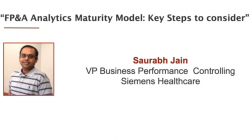To manage business complexity, we need to focus on improving our processes. In this video, Saurabh Jain, explains how analytical journeys at different organisations usually look like.
The quality of a decision is a question about what data or lack of data the decisions are made on. So, let’s discuss what is a Data-Driven Decision and what is not, but also how do we make Fair Decisions.
This article applies to all private sector firms, not just Mergers and Acquisitions (M&A) and Private Equity (PE) firms. The technique described here can also be used to rank the profitability of five financial planning alternatives to the traditional budget.
Today’s finance and accounting professionals face ever-growing challenges when it comes to data. The simplest analyses can be complicated by the wrong data or bad data and too much data can even be a problem. Effectively sourcing, managing, and using data are key skills.
This article focuses on how the Operational Budget’s advanced analytics supports seven of the Beyond Budgeting Institute’s twelve principles and management processes.
Currently artificial intelligence (AI) and machine learning (ML) is havi. In terms of accounting and finance, is AI & ML a gift or curse for us? The answer largely depends on two key variables.
Pagination
Subscribe to
FP&A Trends Digest

We will regularly update you on the latest trends and developments in FP&A. Take the opportunity to have articles written by finance thought leaders delivered directly to your inbox; watch compelling webinars; connect with like-minded professionals; and become a part of our global community.






